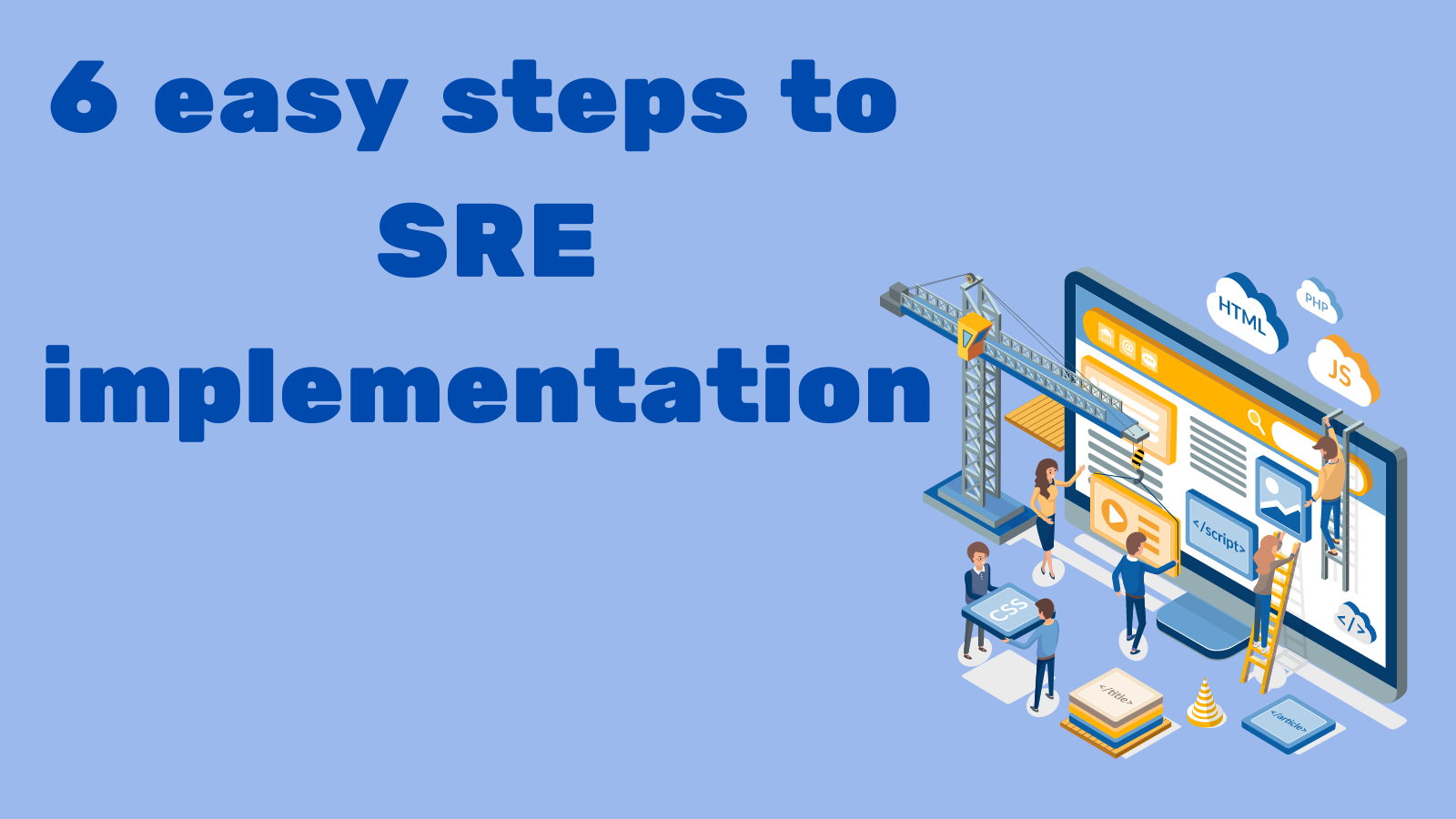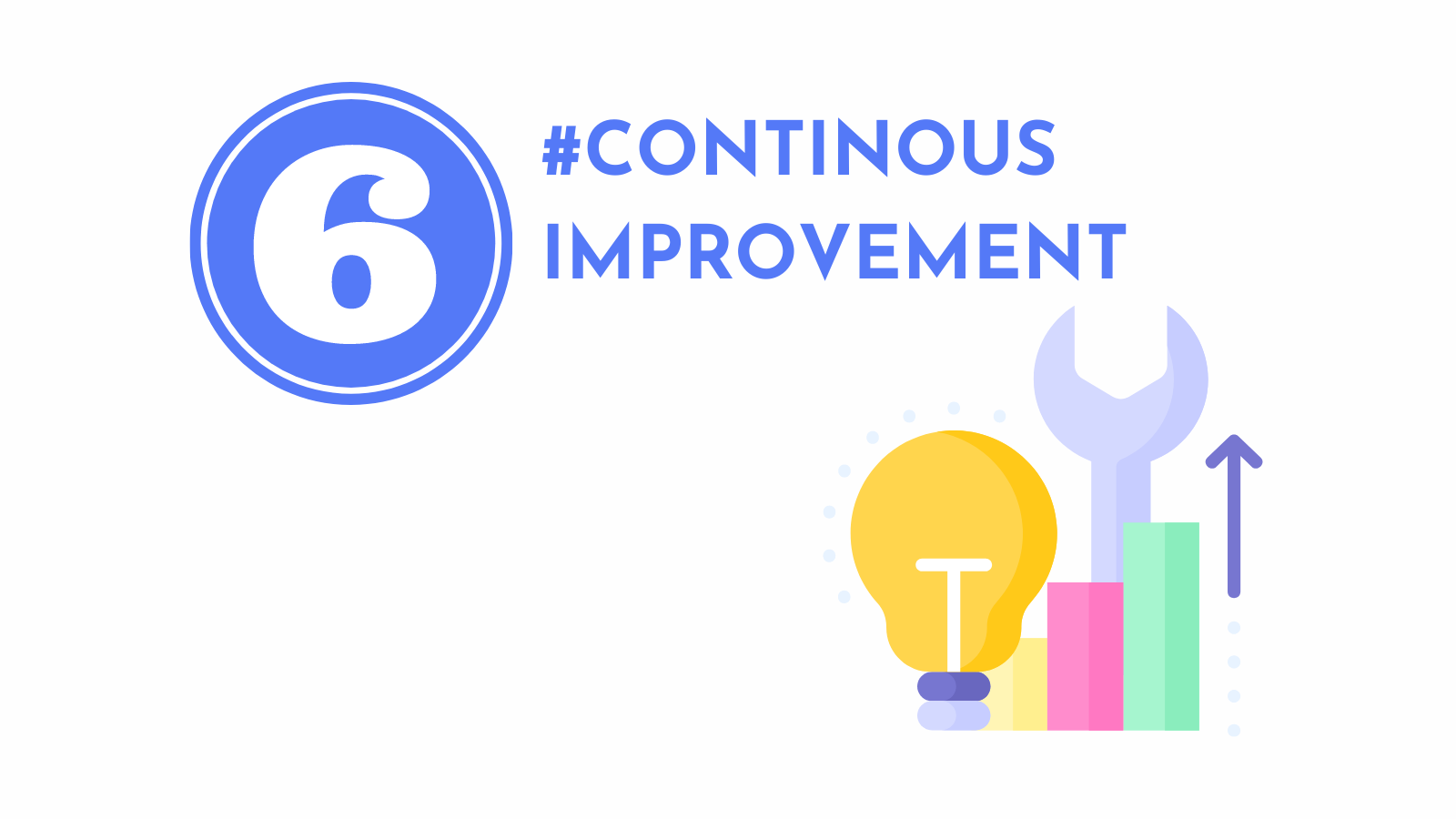Six easy steps to SRE implementation

TL;TR
Site Reliability Engineering (SRE) is an approach to managing and improving an application's reliability, performance, and uptime. To implement SRE, it is essential to start by defining the goals and objectives of the SRE teams, including improving availability and performance and reducing downtime. The next thing would be to identify and prioritize the services and applications for which the SRE teams will be responsible. This may include core business services, customer-facing applications, and critical infrastructure components such as databases and networking. After this, the focus should be on implementing service-level agreements (SLAs) that define acceptable availability, performance, and reliability levels for each product. Once SLAs are in place, the next step should form cross-functional teams with the necessary skills and expertise to support the services and applications. This may include software engineers, systems administrators, network engineers, and other specialists. Afterward, implement processes and tools such as monitoring and alerting systems, deployment automation tools, and performance analysis tools. Finally, remember that optimization is an ongoing process, and continuously review and improve the procedures and practices of the Site Reliability Engineering teams to achieve the desired goals and objectives. This may include regular retrospectives, ongoing learning and training, and adopting new technologies and techniques as needed.
Defining the Goals and Objectives of a Site Reliability Engineering Team

Defining the goals and objectives of the SRE teams is an essential first step in implementing SRE. This includes clearly outlining what the team aims to achieve and how it will measure success. Some common goals and objectives for Site Reliability Engineering teams include:
- Improving the availability and performance of critical services:
This means ensuring that essential services are always available and functioning optimally. This may involve identifying and addressing potential issues that could cause disruptions or slowdowns and implementing measures to prevent or mitigate such problems. - Reducing the mean time to recover from outages
Outages are inevitable, but the time it takes to recover from them can significantly impact the business. By reducing the mean time to recovery (MTTR), site reliability engineers can help minimize the impact of outages and get services back online more quickly. - Increasing the rate of successful deployments
Deploying updates and new features to services can be a complex and risky process. By increasing the rate of successful implementations, the SRE teams can help ensure that changes are implemented smoothly and without disrupting availability.
It's important to note that these are just a few examples, and the specific goals and objectives of a Site Reliability Engineering team will depend on the needs and priorities of the organization. Once these goals and objectives have been defined, the SRE teams can focus on implementing the processes and tools needed to achieve them.
Identifying and Prioritizing Services and Applications for SRE implementation

Identifying and prioritizing the services and applications for which the SRE teams will be responsible is essential in implementing SRE. This process involves evaluating the organization's services and applications and determining which ones are most critical to the business and need the most attention from the Site Reliability Engineering teams. Some examples of services and applications that might be a priority for the sre teams include:
- Core business services:
These are the services that are essential to the operation of the business and are typically used by a large number of people within the organization. Examples include an internal email system or a customer relationship management platform. - Customer-facing applications:
Customer-facing applications are the applications and services that customers directly use, such as a retail website or a mobile banking app. Ensuring the reliability and performance of these applications is critical to maintaining customer satisfaction and loyalty and building trust for the organization. - Backbone components:
These are the infrastructure components that support the organization's services and applications. Examples include databases, networking systems, and storage systems. Ensuring the reliability and performance of these components is essential to the organization's overall operation.
Remember that the specific services and applications that the SRE teams are responsible for will depend on the needs and priorities of the organization. Once these services and applications have been identified and prioritized, the Site Reliability Engineering teams can focus on implementing the processes and tools needed to ensure their reliability and performance.
Defining Performance Metrics in Service-Level Agreements for SRE implementation

Service-level agreements (SLAs) are contracts that outline the level of service that a provider (in this case, the Site Reliability Engineering teams) is expected to deliver to a customer (e.g., the users of the product, application, or functionality). In the context of SRE, SLAs define acceptable availability, performance, and reliability levels for the services and applications for which the SRE teams are responsible. Some common examples of the types of performance metrics that might be included in an SLA include:
- Availability:
High availability is essential for SRE teams because it ensures that users can access and use the functionality when needed, which can significantly impact satisfaction and the application's overall performance. This refers to the percentage of time that an application is available to users. This is typically measured in terms of uptime, the ratio of time an application functions correctly. - Performance:
To ensure the performance of an application. In the context of SRE (Site Reliability Engineering), performance refers to how well an application performs in terms of speed, responsiveness, and efficiency. Application performance is essential for site reliability engineers because it can significantly impact the user experience and satisfaction with the service or application. They may work closely with development teams to optimize the code and architecture of the service or application to improve its performance. In addition, SRE teams may implement processes for regularly reviewing and optimizing the performance of the service or application, such as by identifying and addressing bottlenecks or inefficiencies in the code or infrastructure. - Reliability:
Reliability is essential for SRE teams because it can significantly impact the overall performance and user satisfaction with the service or application. This refers to the ability of a service or application to function correctly and consistently over time. This means that the application should be able to handle the expected workload and user traffic without experiencing unexpected downtime or errors.
Do not forget that the specific metrics and targets included in a Service Level Agreement (SLA) will depend on the needs and priorities of the organization and the particular application in question. Once the SLAs have been defined, the Site Reliability Engineering teams can use these metrics to measure their success in meeting the targets and identify improvement areas.
Implementing Service-Level Agreements in SRE

Once the service-level agreements (SLAs) have been defined and implemented, the next step in implementing SRE is to build cross-functional teams with the necessary skills and expertise to support the services and applications in question. A cross-functional team comprises individuals with various skills and expertise who can work together effectively to achieve a common goal. In the context of SRE, this might include individuals with expertise in software engineering, systems administration, network engineering, and other specialized areas. Site reliability engineers might work on eliminating performance bottlenecks, isolating failures using circuit breaker and bulkhead patterns, creating runbooks, and automating daily operations processes. The specific skills and expertise needed by the Site Reliability Engineering teams will depend on the needs and priorities of the organization and the particular services and applications for which the teams are responsible. For example, a team responsible for supporting a customer-facing web application may need software engineers with experience in web development and front-end design and systems administrators with expertise in web servers and networking. Building cross-functional teams are essential because it allows drawing on a wide range of knowledge and skills, which can be necessary to ensure the reliability and performance of the services and applications in question. By building teams that can work effectively together and draw on the skills of each member, the Site Reliability Engineering teams can more effectively support the organization's critical services and applications.
Developing and Implementing Processes and Tools for the SRE team

Once the service-level agreements (SLAs) have been defined and cross-functional teams have been put in place, the next step in Implementing Site Reliability Engineering (SRE) approach is to develop and implement processes and tools to help the teams achieve their goals and objectives. Some examples of techniques and tools that an SRE team might use include:
- Monitoring and alerting systems:
Tools used to monitor the performance and availability of services and applications in a production environment. These tools are designed to detect issues or problems that may arise and to alert the appropriate parties when such cases occur; they include:
- Infrastructure monitoring tools: These tools monitor the underlying infrastructure that supports an application or infrastructure piece, such as servers, networks, and storage systems.
- Application performance monitoring (APM) tools: These tools monitor the performance of an application, including the response times of various components and the number of errors encountered.
- Synthetic monitoring tools: These tools simulate user interactions with an application or service and measure the performance of those interactions.
- Availability-focused tools: These tools monitor the availability of an application, typically by sending periodic requests to the application and checking for a response.
- The above systems are typically configured to send notifications or alerts to the appropriate parties (such as the Site Reliability Engineering team) when certain thresholds or conditions are met. For example, a warning might be triggered if the response time of an application exceeds a certain point or if the number.
- Deployment of tools and practices:
To deploy tools and techniques for automating the deployment process of updates and new features to services and applications, the following steps can be taken:
- Identify the tools and methods best suited for the organization: The first step is identifying the tools and techniques most appropriate for the organization's needs. This might include tools for continuous integration, continuous delivery, deployment automation, and practices such as blue-green deployments or canary releases.
- Set up the tools and practices: Once the tools and methods have been identified, the next step is to set them up and configure them for use. This might involve installing and configuring the instruments, creating build and deployment pipelines, and setting up the necessary infrastructure and environments.
- Test and validate the tools and practices: To ensure that the tools and approaches are working correctly, it is crucial to test and validate them. This might involve creating test cases and running them against the tools and practices to ensure they are functioning as expected.
- Train relevant teams and stakeholders: To ensure that the tools and practices are used effectively, it is vital to provide training to appropriate development teams and stakeholders. This might include training on using the tools, creating and managing build and deployment pipelines, and troubleshooting issues that may arise.
- Monitor and optimize the deployment process: Once the tools and practices are in place, it is essential to monitor and optimize the deployment process on an ongoing basis. This might involve regularly reviewing and analyzing the performance of the deployment process, identifying and addressing bottlenecks or inefficiencies, and making adjustments as needed to improve the speed and reliability of deployments.
It's important to note that the specific processes and tools that an SRE team uses will depend on the needs and priorities of the organization and the particular services and applications that the teams are responsible for. By implementing the right processes and tools, the Site Reliability Engineering teams can more effectively support the organization's critical services and applications and achieve its goals and objectives.
Optimizing SRE Practices

Optimization is critical to sre implementation and the success of the site reliability engineering (SRE) team. To ensure that the Site Reliability Engineering teams can continuously improve and meet the desired goals and objectives, it is essential to review and improve the team's procedures and practices. Some ways that SRE teams might work to optimize their methods include the following:
- Regular retrospectives:
A meeting in which the teams reviews their processes and practices and discuss what has worked well and could be improved. By regularly conducting retrospectives, the Site Reliability Engineering teams can identify areas for improvement and make changes to its processes and practices as needed. - Ongoing learning and training:
The teams must engage in continuous learning and training to stay up-to-date on the latest technologies and best practices in SRE. This might include attending conferences, taking online courses, or participating in professional development programs. Creating an SRE community in the organization is essential both from a learning perspective and to establish a knowledge base of best practices, train subject-matter experts, help create needed guardrails, and align processes. - Adopting new technologies and techniques:
As new technologies and techniques emerge in the field of SRE, it may be necessary for the teams to assume these to stay competitive and effective. This might involve evaluating new tools and techniques and determining how they can improve the team's processes and practices.
By continuously reviewing and improving its procedures and practices, engineers can ensure that implementing site reliability engineering can meet the desired goals and objectives and support the organization's critical services and applications effectively. In the end, Site Reliability Engineering (SRE) is an approach to operations that ensures that continuously delivered applications run efficiently and reliably using software engineering and automation solutions.